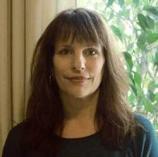Reading Group Guide
Discussion Questions
The Woman in the Photograph

1. Early in their affair, Lee notes that “from the outside” she and Man “looked like opposites: old and young, short and tall, dark and light, serious and gay” (p. 33). While these are superficial differences based on Lee’s first impressions of the other artist, discuss the deeper chasms that separate Man and Lee. Do you think that they were a mismatch from the beginning, or is there truth in the saying that opposites attract?
2. Man and Lee’s love for each other and their love for art are entwined from the beginning, while modern workplace romances are often frowned upon. Do you think they would have been smarter to disconnect their work from their affair after their initial meeting?
3. Though she leaves New York in search of a less conventional life, one of the things Lee says that she loves about French Vogue, or Frogue, is that “relationships there were simple” (p. 86), while her time in the studio with Man is anything but. What keeps Lee tied to her complicated life with Man? Can you relate to her reasons?
4. Were you shocked by some of the descriptions of the erotic photos Man and Lee take? Do you think viewers of the 1930s would have had similar reactions?
5. Gynther notes that Lee had “few close female friends” (p. 116), but a few key female figures feature prominently in Lee’s life. Discuss her relationships with Tanja, Kiki and her mother. How do these women shape her story and sense of self?
6. “It was actually the art history class that made me want to quit painting…. I thought, what could I possibly do that was new? Then I came here and saw what Man and his friends were doing. Turning art upside down and on its head…. And I think it’s more than just interesting, funny, or what have you. It’s necessary” (p. 125). What do you think Lee means when she talks about “necessary art”? Do you think art is necessary?
7. Would you describe Man as Lee’s muse? Why or why not? What inspires her most?
8. Compare the ways that men “use” Lee to the ways Lee “uses” men --- whether sexually, socially or professionally. You might examine her relationships to Man, her father Theodore, de Brunhoff, Jean Cocteau, Zizi and Aziz Eloui Bey.
9. Lee is infuriated at the art world’s double standards when she sees the caption of Man’s photo of her in Le Surrealism au service de la revolution (“Young women: the raw material to power the creative arts”) and laughs at the notion of her father and Man being asked to kiss and fondle each other in erotic photos as she and her fellow female models do. Why do you think sex and women are such important themes in Man’s art? What do they add to his art that men cannot?
10. How do you think Lee’s early sexual trauma relates to her views on sex and relationships? Did her constant fear of being “tied down” to a man strike a chord with you?
11. Lee compares herself to the Seabrooks’s slave girl, remarking at how different she is from the muse she plays in Cocteau’s film. What do the women have in common? What separates them, other than their appearances?
12. While sex is an important part of Man and Lee’s relationship, in what ways does it keep them from seeing eye-to-eye?
13. In the end, Lee wonders whether all artists need either extreme pleasure (sex, love, beauty) or extreme pain (madness, war, death) to create their most meaningful works. Which do you relate to more?
Enhance Your Book Club
1. Man mentions the music of “Django Reinhardt, tango, and Strauss” that he used in his films, and Lee connects to the showtune “Love for Sale” by Cole Porter. Use these mentions as inspiration and create an avant-garde playlist inspired by the novel to provide a soundtrack for your book club.
2. Display photos of Lee by the artists mentioned in the book like Arnold Genthe, Edward Steichen and Man Ray, as well as photos taken by Lee, both in her surrealist days and as a groundbreaking war photographer in Europe.
3. Learn more about the author and her other works of historical fiction at her personal website, danagynther.com.
The Woman in the Photograph
- Publication Date: August 4, 2015
- Genres: Fiction, Historical Fiction
- Paperback: 352 pages
- Publisher: Gallery Books
- ISBN-10: 1476731950
- ISBN-13: 9781476731957








